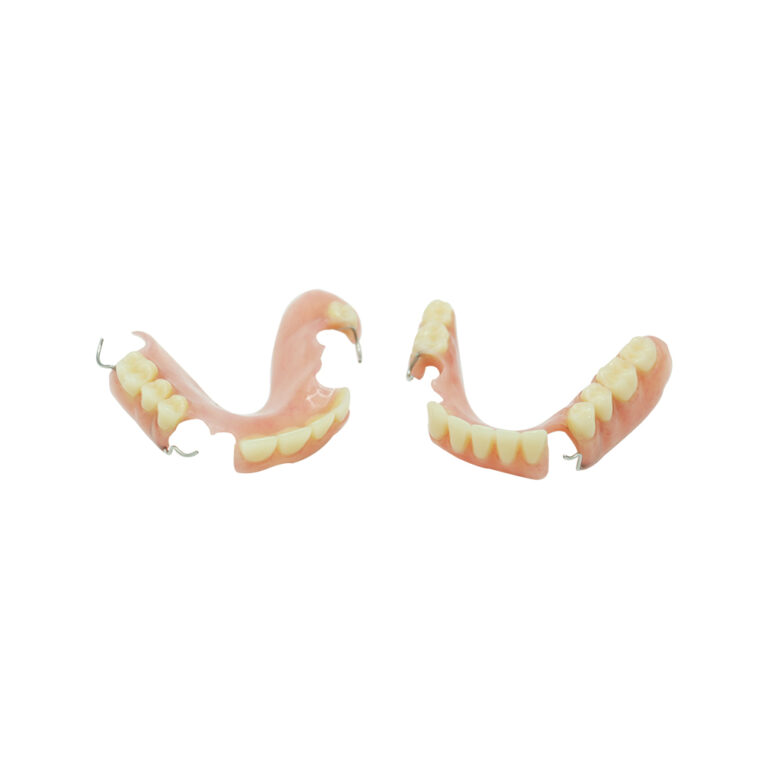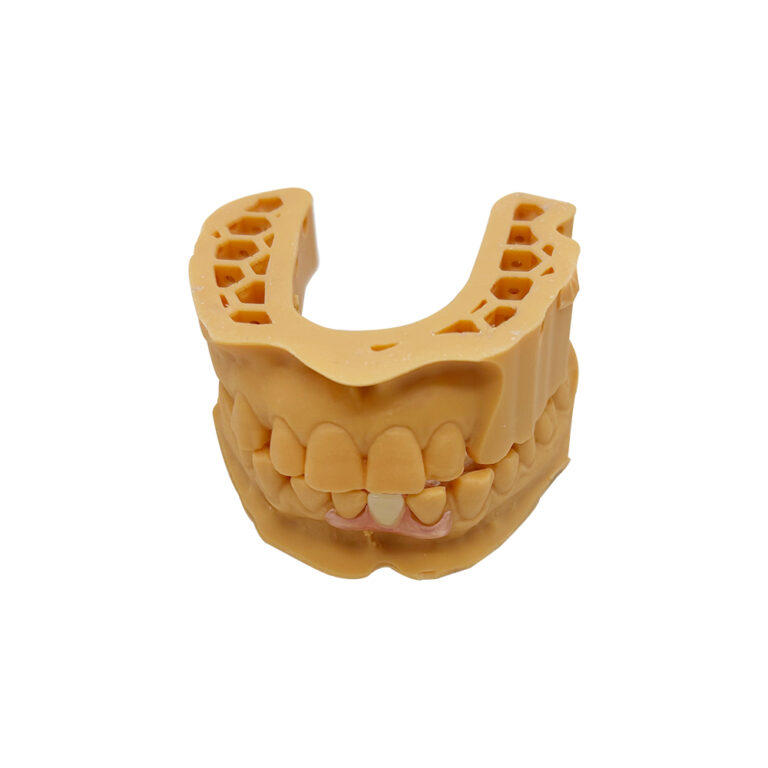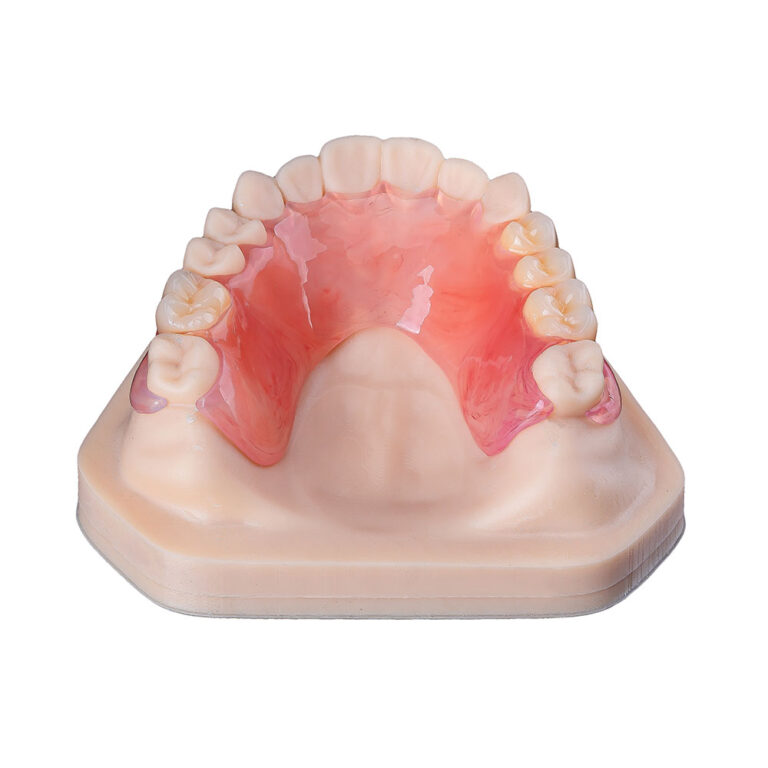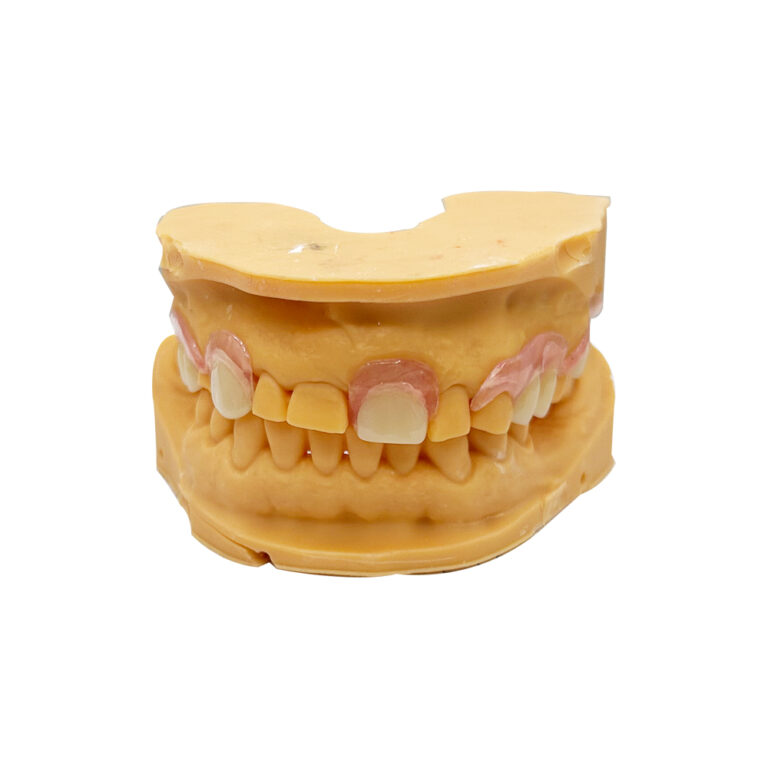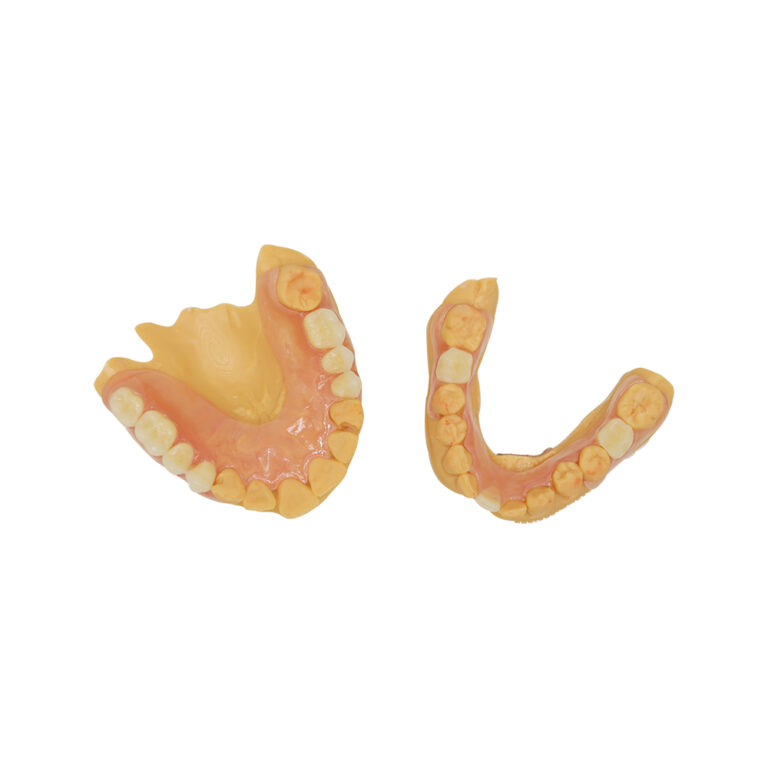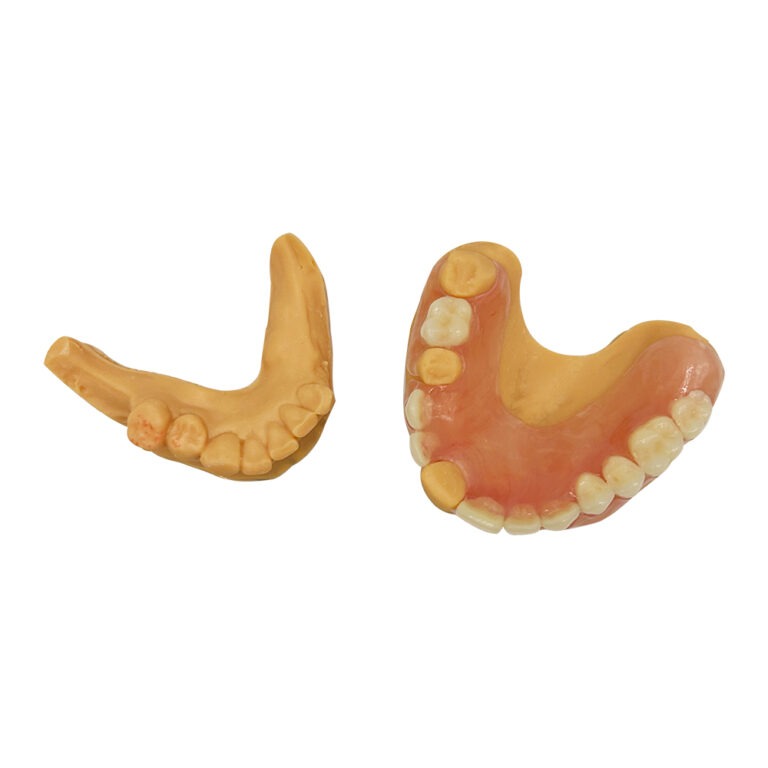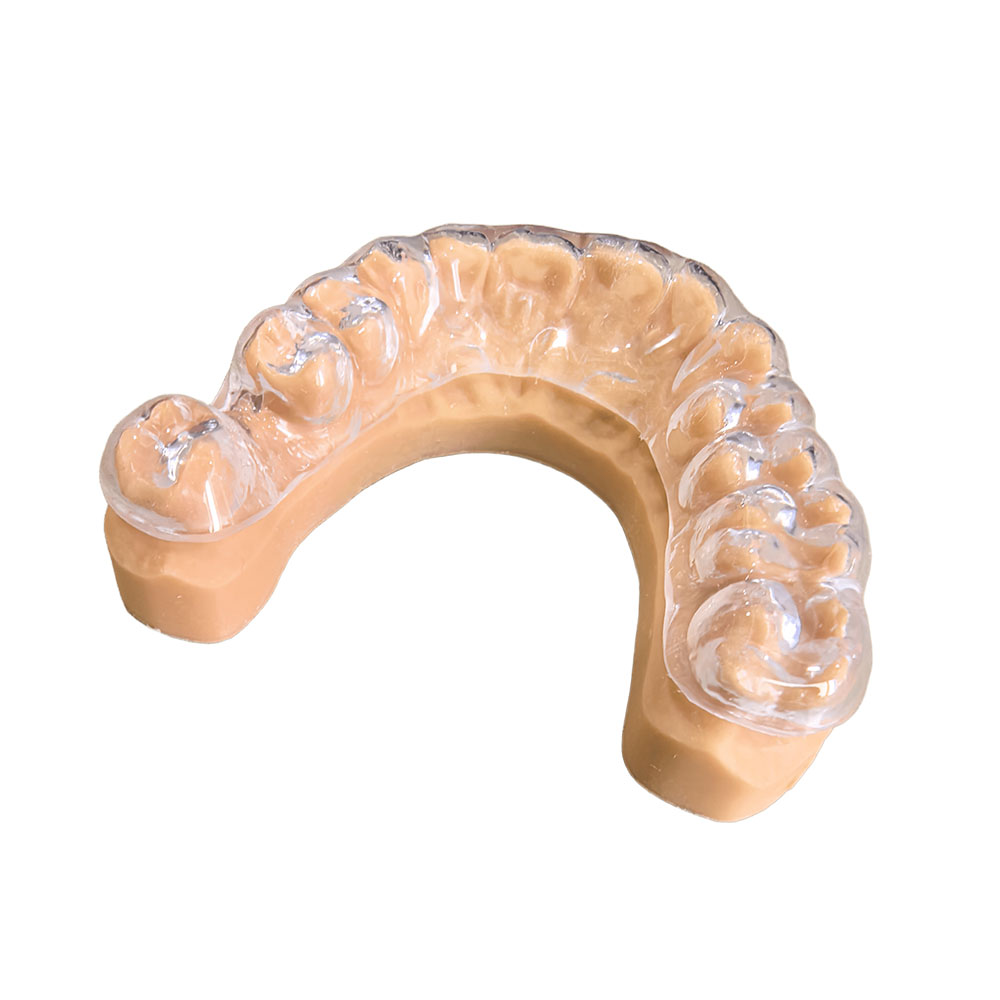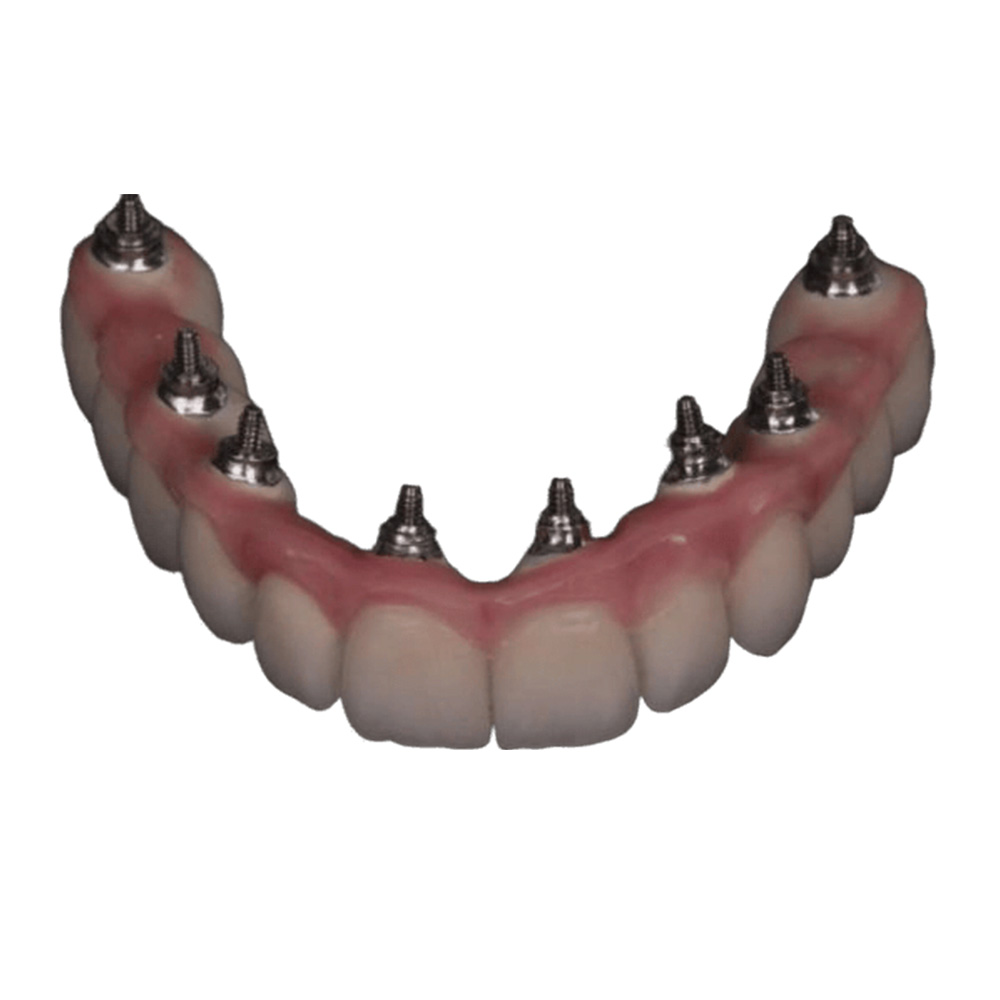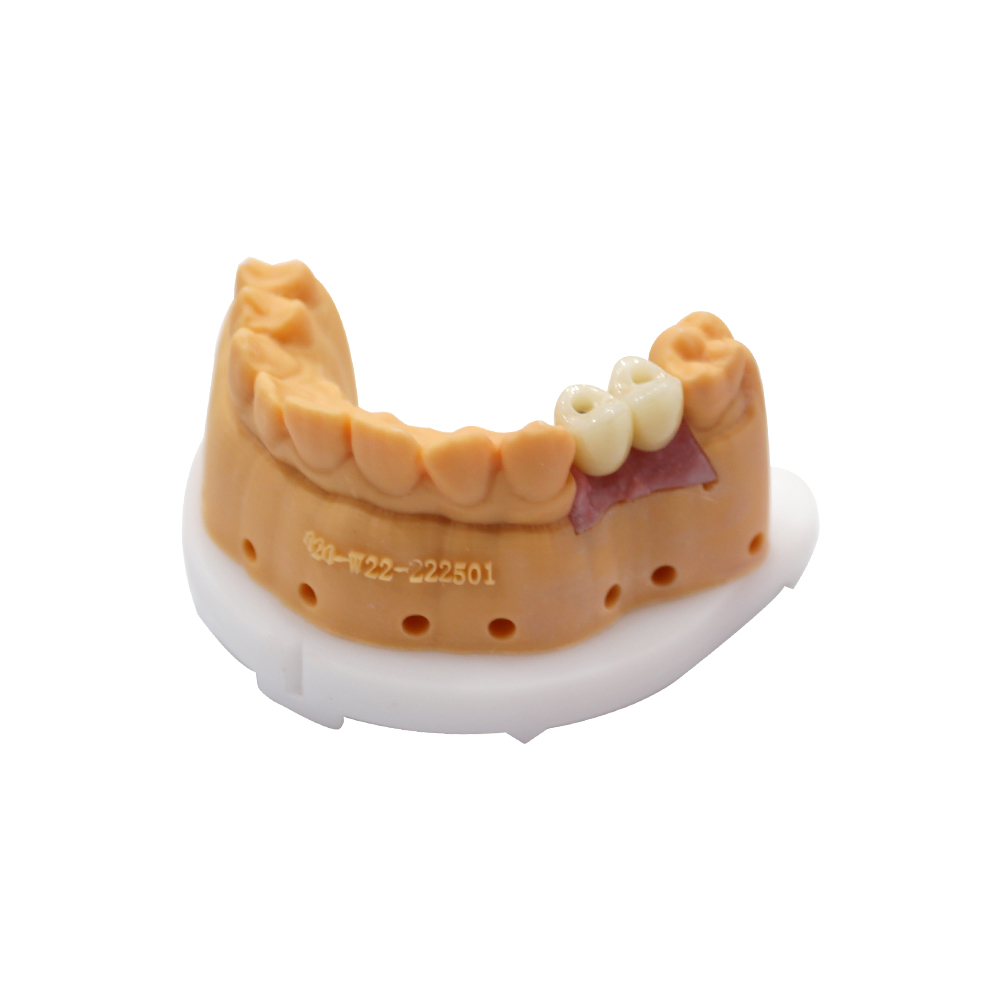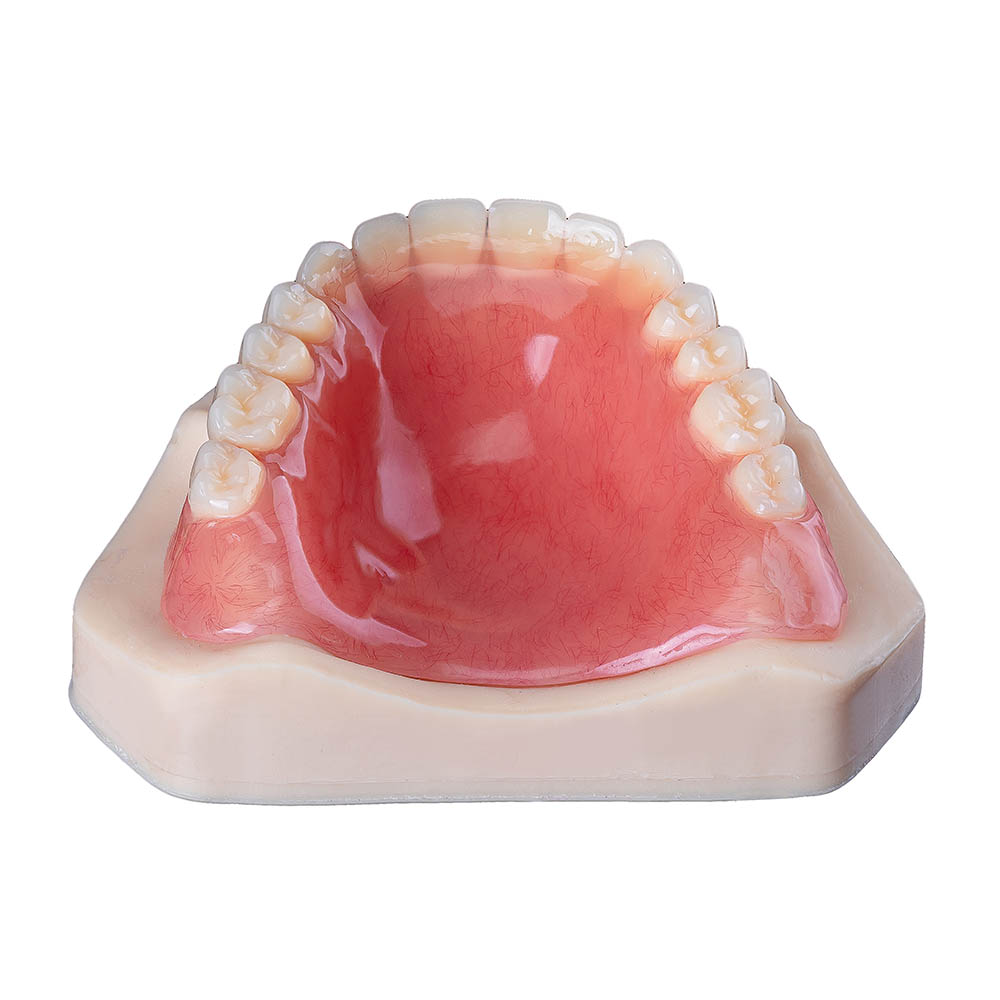
Upper/Lower Flexible Partial Dentures For Front/Back Teeth
Upper/Lower Flexible Partial Dentures For Front/Back Teeth
Why Choose Our Product?
Are you a dentist, or do you work at a dental hospital, clinic, or lab? Do your patients need a good-looking and reliable way to replace missing teeth? At Istar Dental Lab, one of the top five dental labs in China, we work hard to give our valued partners—dentists, clinics, hospitals, and other labs around the world—the latest solutions for missing teeth. Our focus on new ideas, making things perfectly, and putting patients first leads to our special line of Flexible Partial Dentures (FPDs). They are carefully made to work great for any part of the mouth.
What Are Flexible Partial Dentures?
Flexible Partial Dentures are a big step forward for removable false teeth. They are a great option instead of the old, stiff metal ones. Unlike normal plastic or metal partial dentures, FPDs are made from a special, bendable plastic without any metal. This key difference gives them special qualities that change the game for patient comfort, looks, and fit.
Key Features:
- What They’re Made Of: They are mostly made from a high-quality, nylon-based material, like the kind used in top brands like Valplast, Flexite, and Sunflex. These are different from the usual polymethyl methacrylate (PMMA) plastic or cobalt-chromium metals.
- No Stiff Frame: A key feature is that they don’t have a stiff metal frame. This gives them their natural bend and strength. This design also gets rid of ugly metal clips, making them look more natural.
- Safe for Your Body: FPDs are safe for people with allergies and don’t contain certain chemicals (monomers), making them a great choice for patients who are sensitive to plastic or metal.
- Where to Use Them: Istar Dental Lab’s FPDs can be used in many ways when some teeth are missing in the upper (maxillary) or lower (mandibular) jaw. They work for replacing front (anterior) or back (posterior) teeth. They can be used as temporary or long-term solutions, and they are especially great when looks are very important or when patients have uneven gums.
Where Can They Be Used?
Flexible partial dentures for front teeth and back teeth can solve many dental problems. Clinics, hospitals, and labs use these for:
- Replacing one or more missing teeth (front or back)
- Making it easier to chew when back teeth are lost
- Giving patients a natural smile after losing front teeth
- Short-term use while waiting for implants
- A tooth replacement option for people with metal or plastic allergies
- Quick and comfortable solutions for people of all ages
What Patients Say (Satisfaction)
What patients say is the most important way to judge how well any dental replacement works. Istar Dental Lab’s Flexible Partial Dentures always get great reviews from patients, especially for how comfortable and good-looking they are. They also work well for talking and chewing.
Comfort: An Amazing Fit and Fewer Sore Spots Patients always say FPDs are much more comfortable than regular plastic or metal ones (RPDs). This great comfort is because of:
- Flexible Material: The base is flexible, which means fewer sore spots and pressure points. This is very helpful for patients with tricky gum shapes or uneven spots.
- Lightweight: FPDs are much lighter than metal ones, which makes them feel less bulky.
- Note: Some patients might need a few weeks to get used to them because the flexible base can feel a bit thicker at first.
Looks: The “Invisible” Solution FPDs are loved for their great looks, especially for front teeth. Their see-through quality that blends in and the lack of visible metal clips (a key feature of Valplast and Sunflex) lead to much higher satisfaction scores for looks. Patients often say that being able to match the gum color and the “invisible clip” design are big pluses.
Speaking: Getting Used to Them While most patients get used to FPDs in 2–4 weeks, about 20–30% of new users have some trouble speaking at first. This is usually because the denture covers part of the roof of the mouth and is a bit thick. The Istar Dental Lab design team can make changes, like thinning out certain areas, to help patients get used to them faster. In the long run, how well people can speak is about the same as with regular RPDs.
Chewing: Good, But With a Small Difference Patients usually say they can chew well with FPDs. However, scientific chewing tests show they are about 10–15% less effective than cobalt-chrome RPDs, especially with hard or tough foods. But what patients say often doesn’t show this small difference, which might mean they get used to it or didn’t expect it to be perfect.
Design Changes and Long-Term Happiness Istar Dental Lab works with dentists to make design changes that make patients happier:
- Making it Thinner: Carefully reducing the thickness in areas like the part covering the roof of the mouth.
- Hybrid Designs: Using a flexible base with some metal inside to spread out chewing pressure and make it more stable.
- Better Clasps: Making the flexible clips just right for a strong but comfortable hold. Studies show that patients are 20% happier after these kinds of adjustments.
While patients are very happy at first, long-term studies (2–5 years) show that problems like the color changing, losing shine, or becoming loose can make them less happy over time. Regular professional cleanings are very important to keep them comfortable and looking good.
How They Affect Feelings and Quality of Life Besides just working well, FPDs help people feel better about themselves and more confident in social situations, especially if they were embarrassed by visible metal clips before. Quality of life scores (OHIP-14, GOHAI) show a big improvement after getting FPDs, especially in feeling less worried or shy.
A Closer Look: Front vs. Back Teeth and Upper vs. Lower Jaw
Using Flexible Partial Dentures correctly requires a careful understanding of how they work in the mouth, depending on where the missing teeth are. Istar Dental Lab uses its knowledge to design FPDs that look good and work well everywhere.
Flexibility and How It Affects the Mouth Because FPD materials (like Valplast and Flexite) are more flexible than regular plastic or metal, they can fit better around tricky spots. But, this flexibility can let the denture move more, especially on the back teeth where chewing forces are stronger. This can lead to gum irritation, particularly in the lower back jaw.
Front vs. Back Tooth Replacement
- Front Teeth: FPDs are a popular choice for front teeth because they look so good. With no visible metal clips and a natural, see-through look, they are perfect for patients who care a lot about their smile. They usually stay in place well.
- Back Teeth: In the back, not having a stiff frame can make biting less stable. This might cause the denture to bend, lose contact when biting, and could cause the jawbone to shrink faster, especially with heavy chewers. Istar Dental Lab looks closely at each case and may suggest different designs or options for people missing many back teeth.
Upper (Maxillary) vs. Lower (Mandibular) Jaw
- Upper Jaw: The upper jaw usually lets the denture cover more of the roof of the mouth, which helps it stay in place much better. A larger surface area for support helps them work better overall.
- Lower Jaw: The lower jaw is more difficult. It’s harder to keep the denture stable because of less space and a moving floor of the mouth. While the flexible material fits well, it can also lead to more movement, especially when the back teeth on both sides are missing (Kennedy Class I/II).
- A Note for Dentists: Studies show that up to 30% of these lower-jaw cases lose their hold within 2 years. Istar Dental Lab focuses on very careful mold-taking and smart design to make them as stable as possible.
Flexible Partial Dentures: How They Compare to Other Options
To give you a complete view, here is a comparison of Flexible Partial Dentures against regular stiff Removable Partial Dentures (RPDs) and Dental Implants. This will help dentists choose the best treatment for their patients.
| Feature / Solution | Flexible Partial Dentures (FPDs) | Regular Stiff RPDs (Co-Cr, Acrylic) | Dental Implants (Crown/Bridge) |
|---|---|---|---|
| Materials | Nylon-based plastic (Valplast, Duraflex, TCS) | Cobalt-chromium metal, PMMA plastic | Titanium, Zirconia (implant); Porcelain, Zirconia (crown) |
| Flexibility | High (bendy, fits tricky spots) | Low (stiff, exact fit) | Not applicable (it’s fixed in place) |
| Frame | No stiff metal frame | Stiff metal frame or all plastic | No frame (part of the bone) |
| Looks | Excellent (gum-colored clips, see-through) | Good (metal clips often show) | Excellent (looks the most natural) |
| Best For | Uneven gums, metal/plastic allergies, high need for good looks, temporary use | Most cases of missing teeth, good jawbone support, need for stability | One or more missing teeth, enough bone, good overall health |
| Not Good For | Heavy chewers, poor jawbone support, many missing teeth | Very uneven gums, metal allergies, poor dental hygiene | Uncontrolled health problems, not enough bone, heavy smoking |
| How Well it Stays In | Good at first, can get loose over time | Excellent (stiff frame, good clips) | The Best (fused with bone, fixed) |
| Chewing | Good, slightly less than RPDs/implants | Good to excellent | Excellent (works like real teeth) |
| Comfort | Excellent (lightweight, fewer sore spots) | Good (may have pressure points at first) | Excellent (once it heals) |
| Cleaning | Needs careful cleaning (can trap plaque) | Easier to clean, but can irritate gums | Needs careful cleaning to avoid implant problems |
| How Long it Lasts | 3-5 years (often needs replacing) | 5-10 years | 10+ years |
| Repairability | Difficult (doesn’t bond well with repair material) | Good (can be repaired/adjusted) | Limited (crown part can be replaced) |
| Cost (at first) | Cheapest | Moderate | Most Expensive |
| Patient Satisfaction | High for looks/comfort, lower for function/lifespan | Good overall, may be lower for looks | Highest for comfort, function, and looks |
| Bone Health | Limited (sits on gums, may speed up bone loss) | Better than FPDs (gets some support from teeth) | Excellent (helps keep the jawbone strong) |
Key Differences and How to Decide
- Looks: FPDs are the clear winner over regular RPDs because their clips are “invisible,” which is great for patients who care a lot about how they look. Implants look the most natural of all.
- Comfort: FPDs are often praised for being comfortable at first because they are flexible and light. Implants, once healed, are the most comfortable because they feel just like real teeth.
- Function and Lifespan: Dental implants last the longest and work the best. Regular RPDs usually last longer and stay in place better than FPDs, especially after 3 years. FPDs are great for comfort and looks at first but often need to be replaced within 3-5 years.
- Cost: FPDs are the cheapest option to start. But over 5-10 years, their replacement costs might add up. Implants are expensive up front but can be cheaper in the long run if there are no problems.
- Patient Factors: The right choice depends on the patient’s age, health, dental hygiene, bone level, budget, and what they want. FPDs are a great fit for people with allergies or with gum shapes that don’t work well with stiff dentures.
Istar Dental Lab believes in teaching patients about all their options so they can make a good choice. We find that a well-informed patient is a happy patient.
Care and Maintenance Tips
- Rinse after every meal to get rid of food.
- Brush daily with a soft toothbrush and denture cleaner (NOT regular toothpaste).
- Soak overnight in a solution that has no alcohol or bleach.
- Get the fit checked every 6 months at your dental clinic or hospital.
The Future of Research at Istar Dental Lab
As a top dental lab, Istar Dental Lab is more than just a maker of products; we are a center for new ideas. We are always watching for and helping to create the future of flexible dentures:
- Better Plastics: We are always testing new materials like PEEK and PAEK that offer better strength, absorb less water, and are safer for the body.
- Nanotechnology: Our research looks at adding tiny particles to create new materials with better strength, germ-killing power, and color that lasts longer.
- 3D Printing: We are leading the way in using digital tools and 3D printing for flexible dentures. This lets us make custom dentures that are precise, fast, and consistent, which can reduce the need for adjustments.
- ‘Smart’ Denture Materials: We are following research on special plastics that can heal themselves or release medicine, imagining a future where dentures can help keep mouths healthy.
- AI-Powered Design: We are using AI in our design software to make better dentures, predict where pressure will be, and create a custom fit for each patient.
- Eco-Friendly Goals: We are looking for plant-based, compostable plastics to reduce our impact on the environment.
- Combined Manufacturing: We are leading the way with new combined methods that use both milling and 3D printing to create a single denture with both stiff and flexible parts for the best fit and comfort.
Istar Dental Lab is focused on pushing dental technology forward to make sure our partners always have the best, most reliable, and most satisfying solutions for their patients. Partner with Istar Dental Lab to bring excellence to every smile.
How To Order/Use:
- Consult: Meet with a dentist to see what kind of denture is best.
- Impressions: The dentist will take a mold of the patient’s teeth.
- Custom Made: The lab makes a custom denture for the upper or lower jaw.
- Fit and Adjust: The dentist fits it in the mouth and adjusts it for the best comfort.
- Instructions: The dentist explains how to care for and clean it.
Order Today
Help your patients smile with confidence and comfort. Contact us for:
- Bulk orders for clinics and hospitals
- Fast lab service for custom dentures
- Help and support for all your denture needs
Choose the best. Choose comfort. Choose us. Flexible partial dentures for front and back teeth—a great fit for upper and lower jaws

